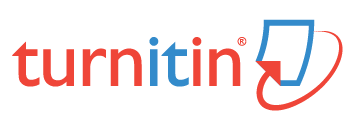SCAFFOLDING TALKS OF AN EFL TEACHER IN TEACHING SPEAKING AT A VOCATIONAL HIGH SCHOOL IN TUBAN
Kata Kunci:
Scaffolding talks, speech function, teaching speakingAbstrak
The background of this research is based on the phenomenon of scaffolding talks used by English teachers in teaching speaking to facilitate learning. Through scaffolding talks the teacher facilitate the transformation of skills and knowledge of the target language in classroom interaction. The problems of this study are: (1) What kinds of scaffolding talks are produced by the teacher in teaching speaking at the Eleventh Grade of SMK Negeri 2 Tuban?, (2) What types of speech functions are performed by the teacher in her scaffolding talks at the Eleventh Grade of SMK Negeri 2 Tuban?, (3) What are the reasons of the teacher in using scaffolding talks in teaching speaking at the Eleventh Grade of SMK Negeri 2 Tuban? The purposes of this study are to identify the teacher’s scaffolding talks in teaching speaking, to describe the types of speech functions in her scaffolding talks, and to know the reasons of the teacher in using scaffolding talks in teaching speaking. The research design of this study was descriptive qualitative research. The subject of this study was one English teacher teaching at the eleventh grade of SMK Negeri 2 Tuban. The data were the teacher’s scaffolding talks in teaching speaking from the classroom interaction in the Eleventh grade of SMK Negeri 2 Tuban in the academic year 2014/2015. The sources of data are the English teacher’s utterances during teaching and learning process and the result of interview. The teacher was observed two times in two different classes and interviewed to ask the reasons of using scafolding talks. The result of the study showed that there were 282 utterances identified as teacher’s scaffolding talks in her teaching and learning process. There are 10 kinds of teacher scaffolding talks. There are modeling, directing, reviewing, explaining, inviting student participant, basic question, advanced question, clarifying student understanding, development student understanding, and reinforcing. From those finding the most dominant was inviting student participant 40 (14.18%). Moreover, the finding also showed the speech functions in her scaffolding talks are Statement, Command and Question. The most dominant is Question 152 (53.9%) and the rarely used is Command 28 (9.93%). The teacher used scaffolding talks with some reasons. The first is to improve her teaching skill, second is to help her students to understand the materials, and the last one to check her students’ understanding by offering a variety of question types that promote higher-order thinking skills throughout the lesson.
Unduhan
Referensi
Cameron, Lyne. 2001. Teaching Language to Young Learners. Cambridge: Cambridge University Press.
Eggin, Suzanne and Slade, Diane. 1997. Analyzing Casual Conversation Great Britain: Creative Print and Design Wales.
Ellis, Rod. 1994. The Study of Second Language Acquisition. Oxford: Oxford University Press
Halliday, M.A.K. 1994. Language as Social Semiotic: The Social Interpretation of Language and Meaning. Newcastle: Athena Press Ltd.
_____________. 1994. An Introduction to Functional Grammar. London: Edward Arnold
Hyland, Ken. 2004. Genre and Second Language Writing. USA: The University of Michigan Press.
Lypscomb et al. 2004. Emerging Perspective on Learning, Teaching, and Technology. Online at http://www.coe.uga.edu/epltt/scaffolding.htm.
Surtiati. 2008. Teacher’s Scaffolding Talks in English Class at Senior High School. Skripsi. English Department State: University of Semarang.
Turney, C. et al. 1983. Sydney Micro Skills Redeveloped Series 1 Handbook: Reinforcement, Basic Questioning, Variability. Australia: Griffin Press Limited.
Turney, C. et al. 1983. Sydney Micro Skills Redeveloped Series 2 Handbook: Explaining, Introductory, Procedure and Closure, Advance questioning. Australia: Griffin Press Limited.
Wood, D., Bruner, J., & Ross, G. 1978. The role of tutoring in problem solving. Journal of Child Psychology and Psychiatry, 17, 89–100.
Unduhan
Diterbitkan
Cara Mengutip
Terbitan
Bagian
Lisensi
Penulis yang menerbitkan naskahnya di Jurnal Teladan setuju dengan ketentuan berikut:
• Penulis memegang hak cipta dan memberikan hak kepada pengelola jurnal untuk publikasi pertama dari karya yang dilisensikan secara bersamaan di bawah Lisensi Creative Commons Attribution-ShareAlike 4.0 yang memungkinkan orang lain untuk berbagi karya dengan pengakuan atas kepenulisan dan publikasi awal karya dalam jurnal ini.
• Penulis dapat membuat pengaturan kontrak tambahan yang terpisah untuk distribusi non-eksklusif dari versi terbitan jurnal dari karya tersebut (misalnya, mempostingnya ke penyimpanan institusional atau menerbitkannya dalam sebuah buku) dengan pengakuan dari publikasi awalnya di jurnal ini.
• Penulis diizinkan dan didorong untuk memposting karyanya secara online (misalnya, di repositori kelembagaan atau di situs web mereka) sebelum dan selama proses pengiriman, karena hal itu dapat mengarah pada pertukaran yang produktif, serta kutipan yang lebih awal dan lebih besar dari yang diterbitkan bekerja (Lihat Pengaruh Akses Terbuka).
Baca selengkapnya tentang Lisensi Creative Commons Attribution-ShareAlike 4.0 di sini: https://creativecommons.org/licenses/by-sa/4.0/.








